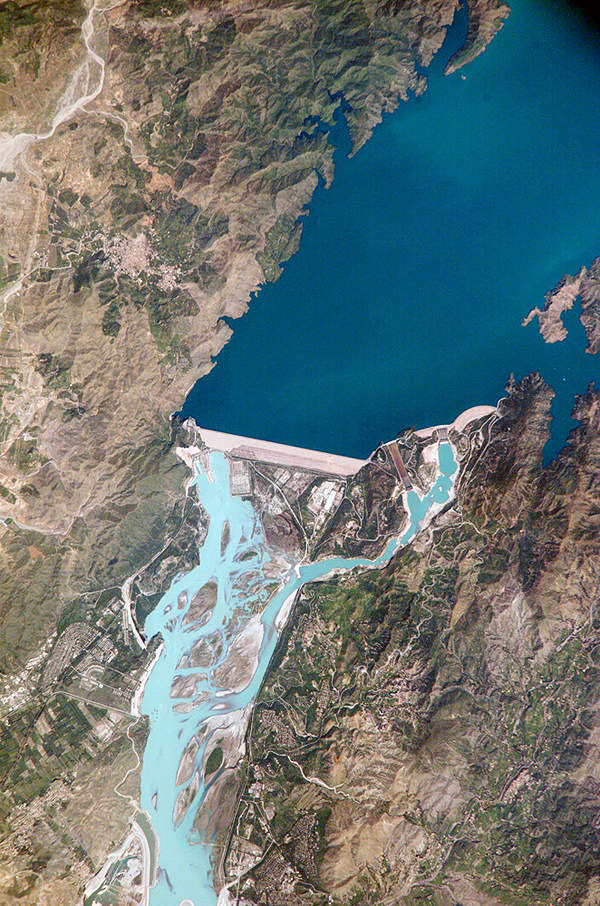
Tarbela Dam is located in Pakistan and is the world’s largest fill-type dam. It is built over the River Indus near the small town of Tarbela in the Haripur District of the country. It is also the second largest dam in the world in terms of reservoir capacity, which is 11.62 million acre-feet (14.3 billion cubic metres).
Construction on the primary elements of the project was started in 1968 and initial operations of the dam started in 1978. The project was fully completed in 1984, at a cost of $1.49bn.
The project was executed by Water and Power Development Authority (WAPDA) on behalf of the Government of Pakistan. Construction was carried out under a single civil works contract.
Major financial contributions for the project came from the World Bank in the form of a bank loan and two International Development Association (IDA) credits. The bank loan was approved in 1968 and the two IDA credits were approved by 1978. The loan and credits were fully paid out by September 1981.
Pakistan is currently constructing the Diamer-Bhasha dam on the River Indus, which will increase the life of the Tarbela dam by 35 years. The new dam project is partly financed by the US.
Purpose and need for Pakistan’s dam project
Pakistan was entirely dependent on unregulated flows of the Indus River and her tributaries even after 20 years of her independence. The agricultural yield was on a lower side due to deficiency of water during the critical growing season. The main reason behind this problem was the seasonal variations in the river flow. Additionally, there were no storage reservoirs to conserve surplus flows.
In order to strengthen the irrigation system, the Pakistani Government, with assistance from the World Bank, embarked on the Indus Basin Project, which comprised of two large dams. The first dam built under this water control project was the Mangla Dam on the Jhelum River, while the other was Tarbela on the Indus River.
The primary purpose of the Tarbela Dam Project was to regulate the flows of the Indus River for irrigation use. Other objectives were to achieve substantial generation of hydroelectric power and flood control by conserving snow melt and monsoon flows of the Indus River.
Components of the world’s largest fill-type dam
The Tarbela Dam Project involved the construction of an earth and rock-fill dam on the River Indus and a power plant. Maximum height of the main embankment from the lowest foundation point is 470ft and length is 9,000ft at its crest. The dam required 138 million cubic yards of fill.
The main embankment is flanked by two auxiliary embankments on the left bank. The maximum height of one of the auxiliary embankments is 345ft, while that of the other is 220ft. The lengths at crest are 2,340ft and 960ft respectively.
The two auxiliary embankments carry two spillways, the service spillway and the auxiliary spillway. The service spillway is fitted with seven gates and has a discharge capacity of 650,000cusec. The auxiliary spillway with its nine gates can discharge 850,000cusec.
The valley wall on the right bank, at the upstream end, was cut through to build a group of four tunnels. Three of these tunnels were intended for hydro-power generation, while the fourth tunnel is used for irrigation releases. A fifth tunnel was constructed on the left bank of the river. It became operational in 1976 and is basically used for irrigation purposes.
Catchment area of the Tarbela Dam reservoir in Haripur District
Catchment area of the reservoir created by the dam is 169,600 square kilometres. The reservoir, with a maximum depth of more than 450ft, can impound up to 11.62 million acre foot (MAF) of water at the maximum lake elevation of 1,550ft. Net usable capacity of the reservoir is 9.68MAF.
The water is stocked during the months of June, July and August, when the river flow is at its maximum.
Tarbela hydropower plant near the River Indus
The Tarbela hydro power plant is constructed on the right side of the main embankment. It is installed with 14 power generating units and the water is fed from outlet tunnels one, two and three. The plant has a total installed capacity of 3,478MW.
Four generators of 175MW each on tunnel one were put into production in 1977. There are six 175MW generators on tunnel two, four of which were commissioned in 1982 and the remaining two in 1985. Four generators of 432MW each were installed in tunnel four in 1992.
Key players involved
The project was built by Tarbela Dam Joint Venture, which was led by Italian contractor Impregilo. The joint venture was a consortium of three Italian and three French heavy civil engineering contractors. Five German and two Swiss companies joined the consortium in 1969.
Members of the joint venture led by Impregilo included Costruzioni generali Farsura, Impresa Astaldi Estero, Compagnie de Constructions Internationales, Compagnie Francaise d’Entreprises, Societe de Construction de Batignolles, Hochtief, Philipp Holzmann, Strabag Bau, Ed Zueblin, C. Baresel, Conrad Zschokke and Losinger.



